The Man in the Iron Mask

Brief Synopsis
Cast & Crew
James Whale
Louis Hayward
Joan Bennett
Warren William
Joseph Schildkraut
Alan Hale
Film Details
Technical Specs

Synopsis
In the palace of Louis XIII, all France awaits the birth of the heir to the throne. When the queen gives birth to twin sons, however, Prime Minister Jean Baptiste Colbert orders the birth to be kept secret and banishes the second infant, Phillipe, to Gascony under the care of the trusted D'Artagnan. Louis, the first born, is crowned King of France, and before his twenty-first birthday, has established a reputation as a profligate and tyrant. Louis is served by the treacherous Nicholas Fouquet, who has blackmailed his way to become Minister of Finance. When D'Artagnan opposes Louis's exhorbitant tax hikes, the King orders his arrest. D'Artagnan and the rebels are brought to Paris where Louis meets his twin brother Phillipe. Intrigued by the resemblance, the King proposes that Phillipe impersonate him in exchange for the lives of his friends, and thus allow the King to be two places at once. As Louis, Phillipe wins the heart of Louis's fiancée, Maria Theresa of Spain, but when the real Louis continues his affair with his mistress, Mlle. de la Valliere, the humiliated Maria Theresa flees to Spain. Colbert pleads with Phillipe to pose as the King and bring her back for a union between France and Spain. Phillipe agrees, and after persuading Maria Theresa to return, he frees D'Artagnan and the other musketeers. Furious, Louis orders Phillipe's execution, but when Fouquet reveals that they are brothers, the King diabolically devises a fiendish iron mask and locks Phillipe in the notorious Parisian prison the Bastille, imprisoned in the mask. When D'Artagnan returns for Phillipe, Colbert reveals Phillipe's identity to Maria Theresa and induces her to get the key to the mask. While Louis is in a drunken stupor, Maria Theresa slips the key from around his neck and D'Artagnan and the musketeers sneak into the Bastille and free Phillipe. In retribution, Phillipe forces Louis to wear the mask of his own making and locks him away in the Bastille. On the day that Phillipe is to marry Maria Theresa, Louis manages to send a message to Fouquet, telling him of the switch. After sending his men to free Louis, Fouquet denounces Phillipe as an impostor. Learning that Louis is enroute to the palace, Phillipe and the muskeeters ride to meet the King and ambush his carriage. In the ensuing fight, the musketeers meet their death in defense of their country, and Louis's coach plunges over a cliff, taking him to his death.

Director
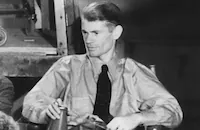
James Whale
Cast

Louis Hayward
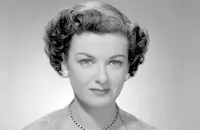
Joan Bennett

Warren William
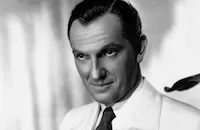
Joseph Schildkraut

Alan Hale

Walter Kingsford

Miles Mander
Bert Roach

Marian Martin

Montagu Love
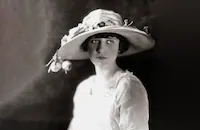
Doris Kenyon

Albert Dekker
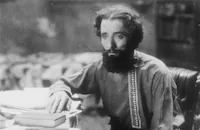
Nigel De Brulier
William Royle
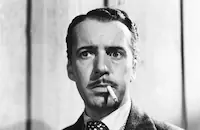
Boyd Irwin
Howard Brooks
Reginald Barlow
Lane Chandler
Wyndham Standing
Dorothy Vaughan
Shelia Darcy
Robert Milasch
D'arcy Corrigan
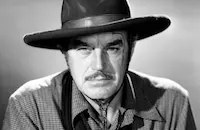
Harry Woods

Peter Cushing
Emmett King
The St. Brenden Choir
Fred Cavens
Ian Maclaren
Crew
Edgar Anderson
Howard Anderson
Bridgehouse
George Bruce
Fred Cavens
Lud Gluskin
Val Paul
Robert Planck
John Ducasse Schulze
Edward Small
Paul B. Stanhope
Cullen Tate
James Whale
Grant Whytock
W. H. Wilmarth

Videos
Movie Clip





Hosted Intro
Film Details
Technical Specs

Award Nominations
Best Score
Articles
The Man In the Iron Mask (1939) - The Man in the Iron Mask (1939)
This version was directed by James Whale, one of the most distinctively stylish directors of the 1930s, known primarily for his horrors films Frankenstein (1931), The Old Dark House (1932), The Invisible Man (1933), and Bride of Frankenstein (1935), which are among the best of their genre. By the time he made The Man in the Iron Mask, he was nearing the end of his brief career. Sadly, he made only three more pictures after this, the last of which, Hello Out There (1949), was never released. Although not considered one of Whale's best films, The Man in the Iron Mask nevertheless has exciting moments, evocative period detail, and a fine cast (including Joan Bennett, Warren William and Joseph Schildkraut) supporting impressive work by Louis Hayward in the dual roles of Louis XIV and his brother Philippe.
The South African-born Hayward never rose to top leading man ranks, but he worked steadily into the 1970s, mostly on television in later years. The one-time husband of actress-director Ida Lupino (from 1938 to 1945), he was the first actor to portray Simon Templar, aka The Saint, on screen and turned up in the role of D'Artagnan in an odd twist on the same Dumas story, Lady in the Iron Mask (1952).
Speaking of odd twists, that 1952 release featured Alan Hale, Jr. in the role of Musketeer Porthos, the role played by his father in the 1939 version of The Man in the Iron Mask. Hale Jr., best known as the Skipper on Gilligan's Island, also played Porthos the same year in At Sword's Point (1952) and yet again in The Fifth Musketeer.
Miles Mander, who plays Musketeer Aramis, played Cardinal Richelieu in a slapstick version of The Three Musketeers (1939). Fencing master Fred Cavens appears in a small uncredited role as Francois. Cavens was the fencing choreographer-instructor and/or stunt coordinator on a number of the great swashbucklers of the period, including Captain Blood (1935), The Adventures of Robin Hood (1938), and the Musketeers story At Sword's Point. He also appeared in Fairbanks' silent version of this story, The Iron Mask. The cast also features, in a small role, Dwight Frye, who played the memorably demented Renfield in Dracula (1931) and appeared in several of Whale's 1930s horror movies.
Lud Gluskin and Lucien Moraweck were Oscar®-nominated for their original score for this film. The cinematography was by Robert Planck, who later received an Academy Award nomination for his work on The Three Musketeers (1948). Parts of the picture were shot at the Los Angeles County Arboretum and Botanic Garden.
Director: James Whale
Producer: Edward Small
Screenplay: George Bruce, based on the novel Vingt ans apres by Alexandre Dumas, pere
Cinematography: Robert H. Planck
Editing: Grant Whytock
Art Direction: John DuCasse Schulze
Original Music: Lucien Moraweck
Cast: Louis Hayward (Louis XIV/Philippe), Joan Bennett (Princess Maria Theresa), Warren William (D'Artagnan), Bert Roach (Athos), Alan Hale (Porthos), Miles Mander (Aramis).
BW-110m.
by Rob Nixon

The Man In the Iron Mask (1939) - The Man in the Iron Mask (1939)
Quotes
How could your brother be such a monster?- D'Artagnan
Take me to where the Crown of France is to be found.- Philippe
Where are you going?- Colbert
After a murderer!- D'Artagnan
Trivia
Peter Cushing did double duty on this film. In additional to his own role, he would feed Louis Hayward the lines for the split screen shots.
Notes
According to an article in Variety, Sigrid Gurie and Frances Dee were tested for the female leads in this picture, and Douglas Fairbanks Jr. was considered for the title role. News items in Hollywood Reporter add that this picture, budgeted at $1,000,000, was Edward Small's biggest picture on his UA program. Art director John DuCasse Schulze designed 46 set plans for the picture. Lud Gluskin and Lucien Moraweck were nominated for Academy Awards for their original score. Among the many versions of the Alexandre Dumas novels are The Iron Mask, a 1929 United Artist's production directed by Allan Dwan and starring Douglas Fairbanks (see AFI Catalog of Feature Films, 1921-30; F2.2737); a 1977 television drama The Man in the Iron Mask directed by Mike Newell and starring Richard Chamberlain; a 1998 Invisible Studio production directed by William Richert and starring Edward Albert; and a 1998 MGM/UA release, also entitled The Man in the Iron Mask, starring Leonardo DiCaprio and directed by Randall Wallace.

Miscellaneous Notes
Released in United States 1939
Released in United States March 1975
Released in United States 1939
Released in United States March 1975 (Shown at FILMEX: Los Angeles International Film Exposition (3-day James Whale Retrospective) March 13-26, 1975.)














